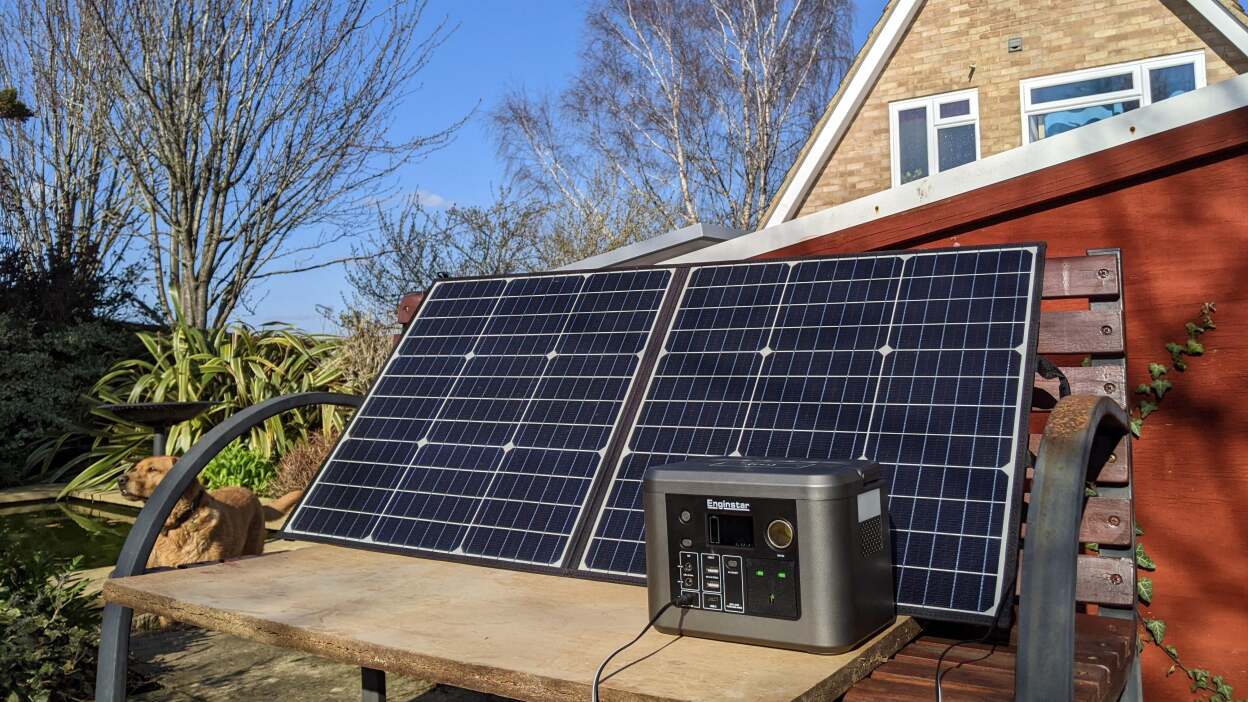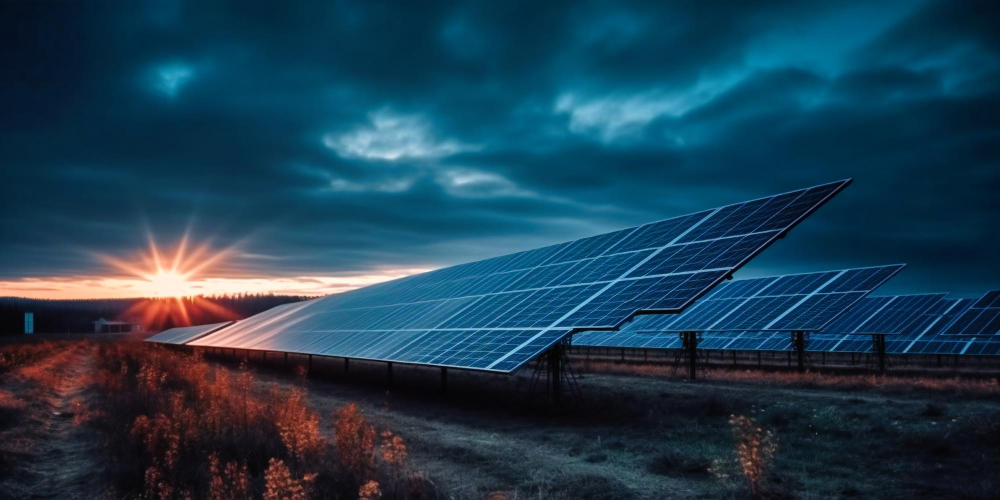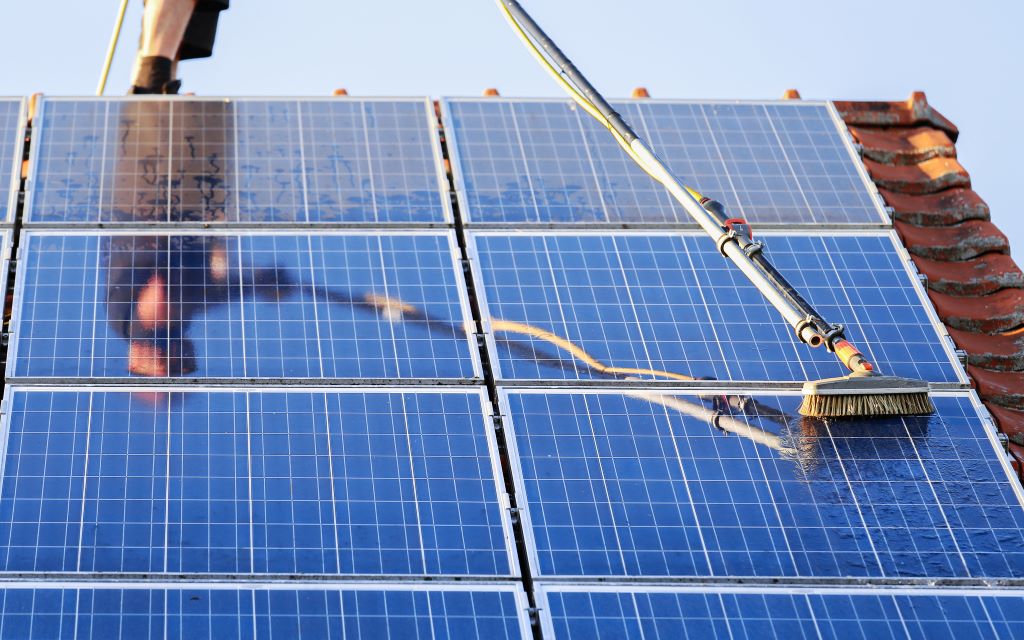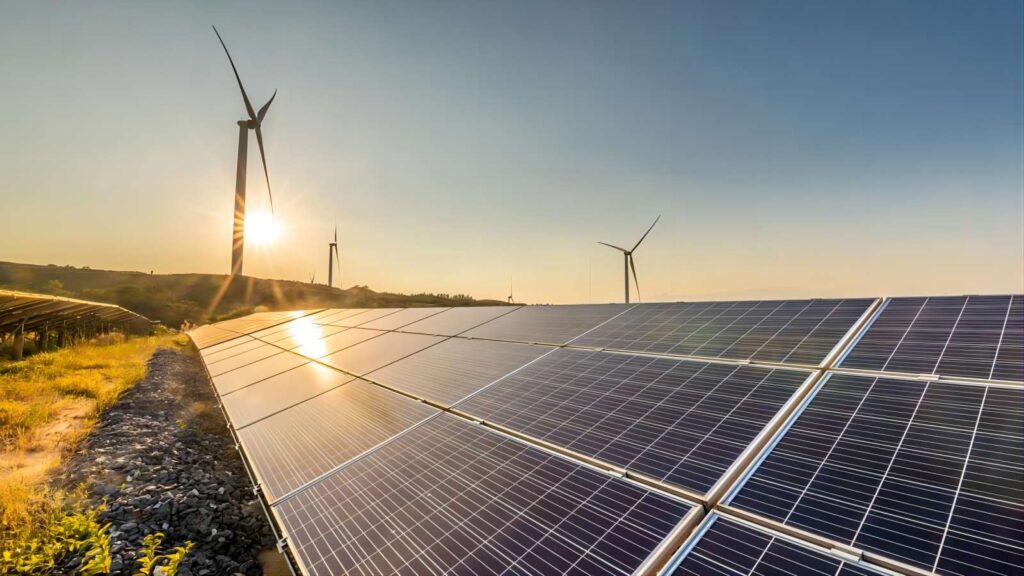Yes, it takes work. The average daily consumption of one household is about 30 kWh, and a single portable 100 W panel produces about 0.5 kWh/day in good conditions. This way, you would need 60 panels to satisfy a day's consumption, plus add an inverter for converting DC to AC and batteries for night times or overcast days. The more important appliances of house-like lights and refrigerators could easily be run for the day on a 10 kWh battery system. Such a system would require, however, an outlay of over $20,000 and thus is not an especially practical solution for a full-time residence.

1. What Are Photovoltaic Cells in Portable Solar Panels?
The photovoltaic cell is the major technology used in all solar panels, both stationary and portable. PV cells are made to convert sunlight into electricity through the photovoltaic effect, which is a process where photons in sunlight dislodge electrons in a semiconductor material, silicon and create a flow of DC electricity. In a portable solar panel setup, these PV cells usually come in either monocrystalline or polycrystalline type.
Monocrystalline cells normally exhibit higher efficiency, typically up to 18-22%. To put that into perspective, a portable 100-watt capacity solar panel made from monocrystalline cells could produce up to 0.5 kWh on a sunny day. In other words, a panel like this can charge devices like laptops and phones and power small appliances such as lights and fans for a considerable part of the day with five hours of direct sunlight. Polycrystalline panels are cheaper with slightly lower efficiency, typically from 15 to 18%, hence quite feasible in cost-sensitive setups but requiring more space or panels to generate the same energy.
Another important factor in considering photovoltaic cells for portable solar panels is their size and surface area. For instance, the average 100-watt portable panel may measure approximately 1.6 square meters. In this respect, installing 10 such panels would require about 16 square meters of surface area either on the ground or mounted on a movable frame.

2. DC to AC Conversion: How Does It Work?
Solar panels generate DC, or direct current, electricity, while household appliances and most electronic devices require AC, or alternating current, to operate. An inverter enters to convert the DC generated by the solar panels into usable AC power within the home. Inverter efficiency is very key and highly efficient; modern inverters have conversion rates of around 90-95% or so.
For example, consider that a 300-watt portable solar panel produces about 1.2 kWh within a day. With an inverter efficiency of 95%, about 0.06 kWh will be lost as heat while converting DC into AC. This means that about 1.14 kWh of AC electricity will be left available to be used. Such an amount is enough to keep a light bulb of 60 watts running for roughly 19 hours or can keep a typical refrigerator running at about 150 watts for roughly 7.5 hours.
The performance of your system could be different depending on the type of inverter that you will get. You will require a pure sine wave inverter for running sensitive electronic items such as computers or medical equipment. These inverters, depending on their capacity, may cost between $200 to $600, while cheaper modified sine wave inverters may have lower prices but are less reliable for use with sensitive devices.
3. How Much Energy Can Portable Solar Panels Generate?
The production of energy in portable solar panels will depend on the size of the panel, its efficiency, and all environmental factors regarding sunlight exposure. For example, a normal 100-watt portable panel produces up to 0.3 to 0.6 kWh per day at ideal conditions; this would be enough to charge small devices like phones or temporarily give power to lighting or small appliances.
To quantify that, assuming your household uses an average of 30 kWh/day, which is the U.S. average consumption, you would need at least 50 to 60 portable solar panels in ideal conditions to create adequate electricity to meet your daily needs. This will be under the assumption that each panel generates approximately 0.5 kWh daily.
This means that in areas like Southern California, where the solar irradiance is higher, portable panels will be more productive simply because of better sunlight conditions. This can be demonstrated by the fact that a 200-watt panel may be able to generate as much as 1 kWh per day in such an area but only 0.3 to 0.5 kWh daily in cloudier climates such as Seattle.
Scaling up for residential purposes, you could implement a setup involving several portable panels. Ten 300-watt portable panels would each produce about 1.2 kWh/day, for a total of approximately 12 kWh/day – enough for some lights, a refrigerator, and a few electronics, but still a long way from full house demand.
4. Battery Storage: A Crucial Factor in Solar Power
Battery storage is what makes portable solar panels a practical solution for powering a house. The panels will only create electricity when the sun shines, meaning you will want some system of holding extra energy produced during the day to be used at night or during cloudy periods. Lithium-ion batteries are popular in solar applications for durability, higher energy density, and longer life cycles.
A single-cell 200Ah lithium battery storing about 2.4 could run a light bulb of 60 watts for roughly 40 hours and run a refrigerator that uses about 150 watts for about 16 hours. Similarly, scaling up a system using five such 200Ah batteries would store 12kWh, which is sufficient to cover essential devices overnight or during outages.
There are considerable limitations to battery storage, mostly related to the cost. Generally, high-quality lithium-ion batteries cost in the range of $400-$800 per kWh of storage. Building a system capable of storing 30, maybekWh – maybe enough to power a household for a day – could be in the range of $12,000 to $24,000. Lead-acid batteries are cheaper but have shorter life spans and much lower efficiency, making them less ideal for long-term use in residences.
5. Efficiency of Portable Solar Panels vs. Roof-Mounted Panels
It is relevant to talk about the degree of efficiency and scalability involved in comparing portable solar panels with roof-mounted panels. Efficiency rates for portable solar panels range from 15-20%, while roof-mounted systems, especially those with newer technologies involving half-cell or bifacial designs, have managed to achieve up to 22% efficiency. That difference in efficiency settles on more energy produced per square meter of solar paneling.
For instance, while a 5-square-meter roof-mounted solar panel system could generate approximately 1.1 kWh per day, the same area in portable panels could only produce about 0.8 kWh per day because of lesser efficiency and perfect positioning. A roof-mounted system also has the added advantage of sitting fixed and optimally angled toward the sun throughout most of the year, while portable solar panels may only sometimes face perfect alignment to capture the maximum amount of sunlight.
Also, portable solar panels are usually smaller; hence, the overall capacity of energy production could be higher. For example, a normal 100-watt portable panel measures about 1.6 square meters, while roof-mounted panels can be much larger and produce 300-400 watts per panel. Therefore, to come close to the output of a roof-mounted system, it would take several panels, which may be space-consuming if you intend to use them permanently for a residential house.
6. How Long Can Portable Solar Panels Power a House?
The time that portable solar panels can power a house depends on energy consumption, battery storage, and panel output. For example, if your home uses 30 kWh of electricity per day and your portable solar panel setup produces 0.6 kWh per panel, you would need about 50 panels to meet the daily energy demand.
In practice, though, most portable solar systems are designed either for backup or supplemental electricity rather than full-time. A small system of five 200-watt panels, generating 5kWh/day, could support basic appliances, lighting, fans, and a refrigerator for refrigerator for 12-24 hours during an outage.
If your house has a backup battery system, then that stored energy could extend the period one can power devices without sunlight. To give you an example, with a 10-kWh battery capacity, you could keep a refrigerator, a few lights, and a laptop running for about 2-3 days in low sunlight conditions or at night.
7. Challenges and Considerations for Using Portable Solar Panels to Power a Home
While there is a plethora of advantages to portable solar panels, there are several drawbacks to the usage of portable solar panels at home. First, the space is a huge limitation. You will require about 50 or more 100-watt panels in order to generate 30 KWh a day; this means it will need approximately 80 square meters of facility, which is very rarely available in residential settings.
The second con is a dependency on favorable weather. Since it needs sunlight to run a solar panel, cloudy weather or short days in winter will reduce its efficiency by far. In cloud conditions, the panel output can be as low as 80%, meaning you will need a reliable battery system to hold energy stored for those days when the generation via solar isn't enough.
This, besides, is an economic barrier to scaling up portable systems. Whereas one panel may cost something in the range of $200-400, a full system including a number of panels, inverters, and batteries, along with their mounting hardware, would likely be several thousands of dollars. A planned installation for 30 KWh/day is believed to cross over US$30,000 in light of all the components considered, thus becoming comparable to the benchmark roof-mounted solar installation.



